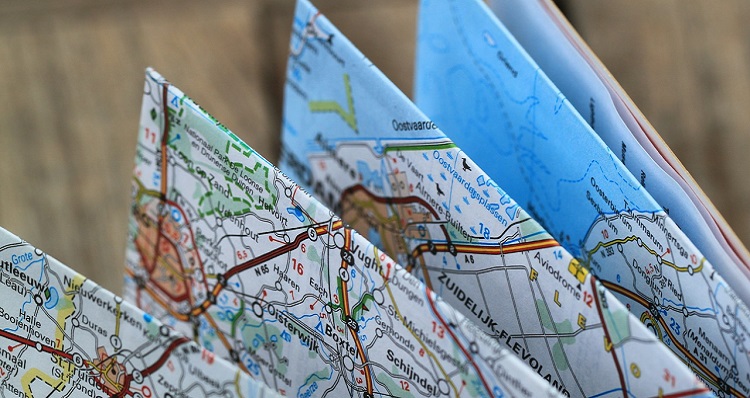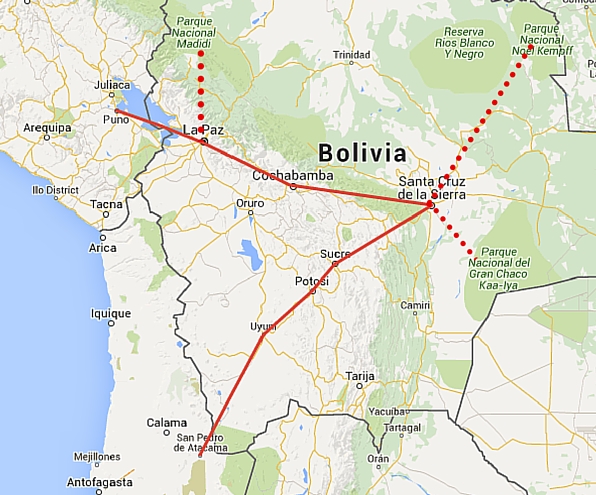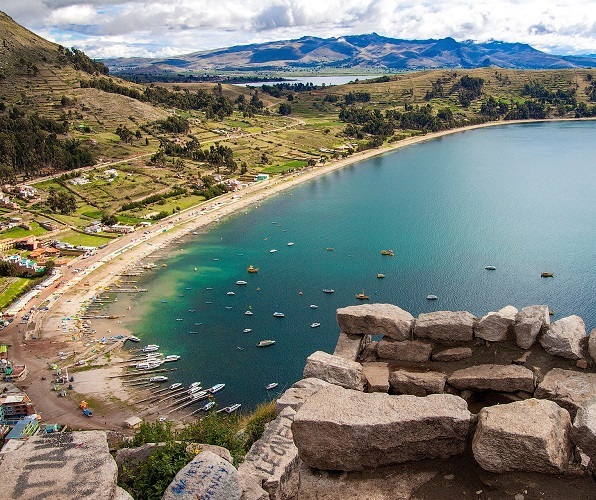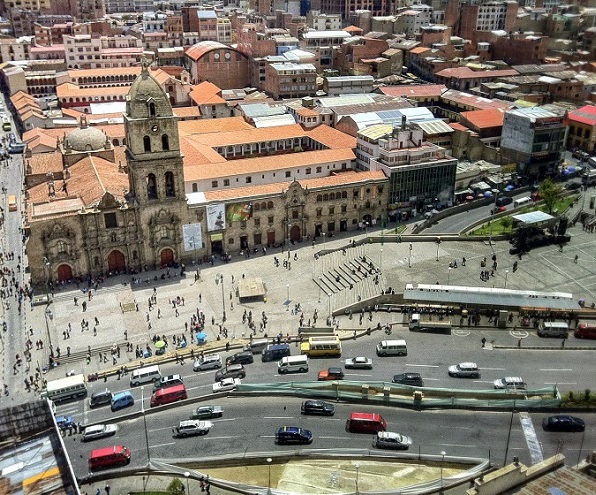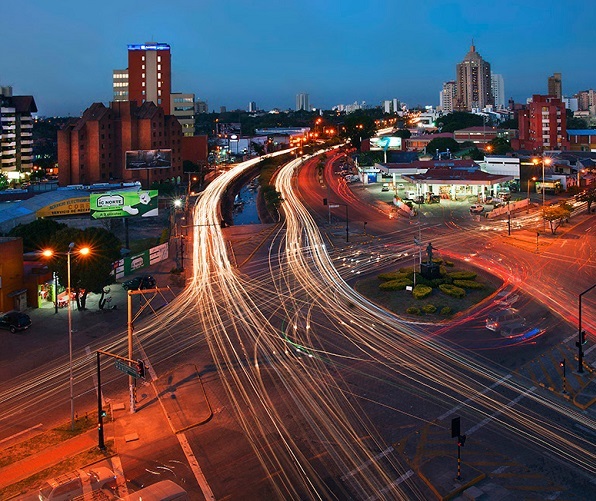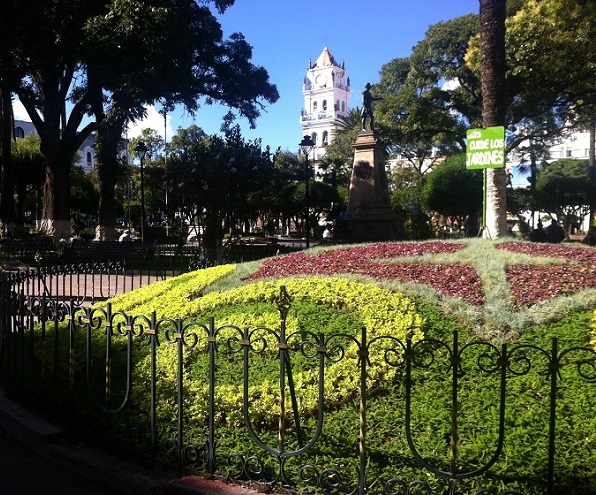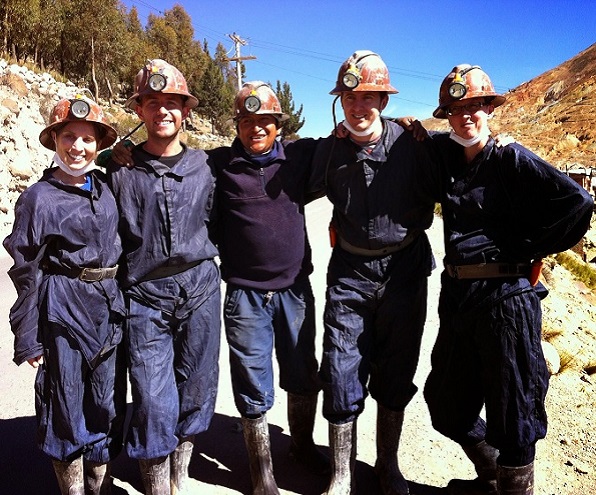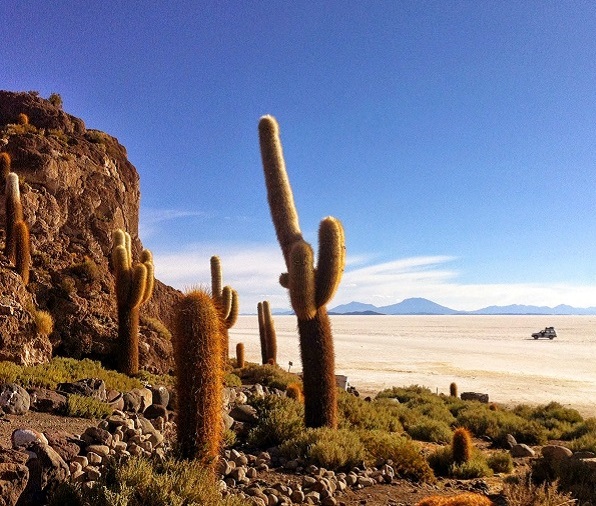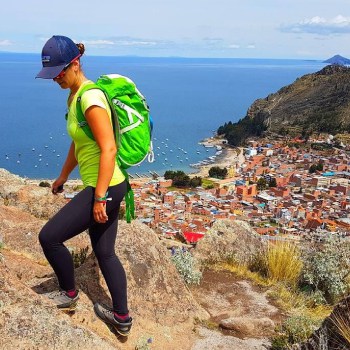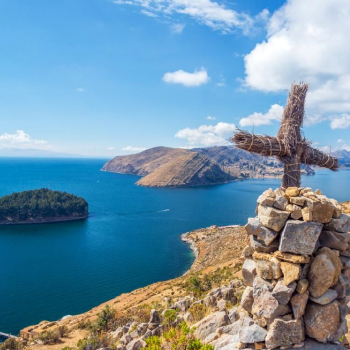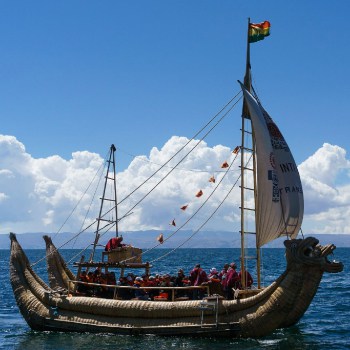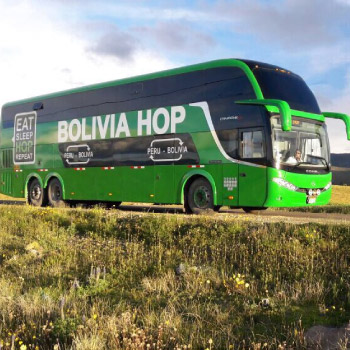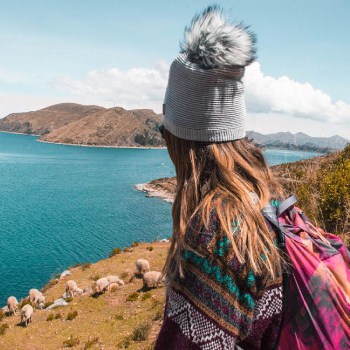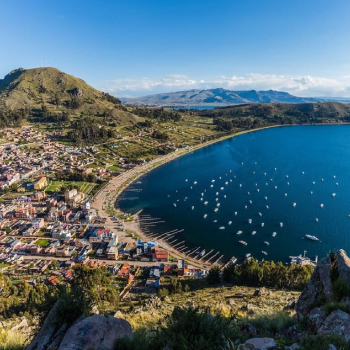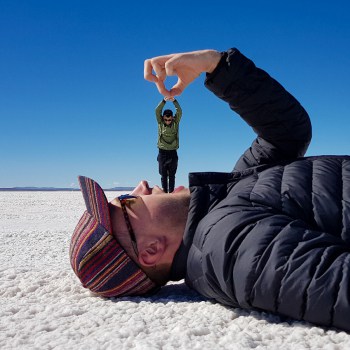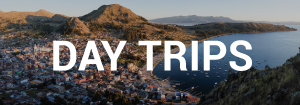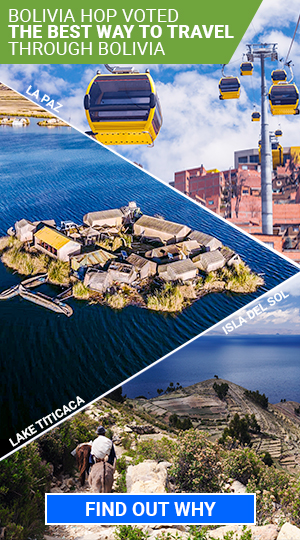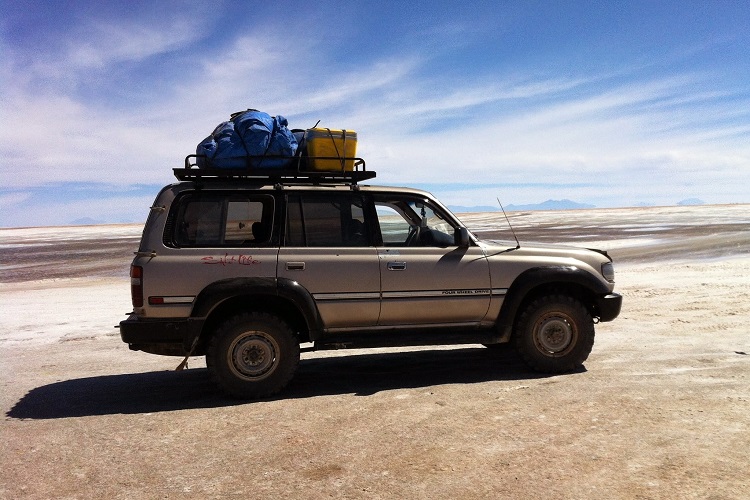 A land of soaring contrasts and exhilarating extremes, Bolivia is teeming with adventure at every twist and turn. From adrenaline-pumping activities and spectacular wildlife to beautiful indigenous villages and unique cultural experiences, there is something to suit every taste and travel-style.
While a remarkable place to visit, it’s no secret that traveling in Bolivia can be challenging to say the least. Because a significant portion of the country can only be accessed via unpaved roads, tourists end up skipping whole regions altogether; a real shame given that Bolivia’s topography is what makes it so utterly unique. When planning your Bolivian adventures don’t be afraid to step off the beaten path; trust us, you won’t be disappointed!
To help travellers experience the best Bolivia has to offer, we have put together the following itinerary outlining the most popular sights and attractions on route from Peru to Chile.
A land of soaring contrasts and exhilarating extremes, Bolivia is teeming with adventure at every twist and turn. From adrenaline-pumping activities and spectacular wildlife to beautiful indigenous villages and unique cultural experiences, there is something to suit every taste and travel-style.
While a remarkable place to visit, it’s no secret that traveling in Bolivia can be challenging to say the least. Because a significant portion of the country can only be accessed via unpaved roads, tourists end up skipping whole regions altogether; a real shame given that Bolivia’s topography is what makes it so utterly unique. When planning your Bolivian adventures don’t be afraid to step off the beaten path; trust us, you won’t be disappointed!
To help travellers experience the best Bolivia has to offer, we have put together the following itinerary outlining the most popular sights and attractions on route from Peru to Chile.
Bolivian Life Quick Tip:
As voted the best way to travel around Bolivia and Peru, we highly recommend choosing Bolivia Hop as your means of transport. Their safe, flexible and trustworthy service have proven to be the best way of getting the most out of your time in South America!
Recommended Days
21
Theme
Adventure; Wildlife; CultureStart / Finish
Peru to ChileHighlights
- Hike across the stunning Isla del Sol
- Bike down the world’s most dangerous road
- Experience the entertaining sport of Cholita Wresting
- Purhase beautiful handicrafts from Bolivia’s colourful markets
- See dinosaur footprints with your very own eyes
- Discover some of the world’s most pristine and untouched national parks
- Visit the Jesuit Missions of Chiquitos
- Spot jaguars, pumas and other large mammals in their natural habitat
- Tour the deadly mines of Cerro Rico
- Traverse the largest salt flats in the world
Itinerary
1. Copacabana
Lapping the shores of Copacabana, Lake Titicaca is not only one of Bolivia’s most beautiful and treasured landmarks, but is also the highest navigable lake in the world. Travelers flock to the resort town to soak in stunning views of Lake Titicaca, savor freshly caught trucha and explore what the Inca’s believed to be the birthplace of their empire.
One of the best ways to grasp the sheer magnitude of Lake Titicaca is to take a boat trip from Copacabana to Isla del Sol. Here you will discover ancient Inca ruins scattered throughout the island as well as Aymara villagers busy farming the land and tending to the sacred sites. Walking from one side of the island to the other is a cathartic experience and one which will enable travelers to witness some of Bolivia’s most breathtaking scenery.
Copacabana itself is a quaint little town to explore, with many shops, restaurants and bars lining the main streets. And if it’s amazing views your after, there is no better place than the summit of the “Stations of the Cross” walk to observe Lake Titicaca in all its glimmering glory.
Recommended days: 3
Activity Ideas:
- Explore the ancient ruins of Isla del Sol
- Visit the Basilica of Our Lady of Copacabana
- Shop along Avenida 6 de Agosto
- Hike up to the ‘Stations of the Cross’ for magnificiant views over Lake Titicaca
- Order fresh trout from one of the local bar-and-grill restaurants
2. La Paz
Set against a striking backdrop of snow-capped mountains is Bolivia’s third most populous city and the world’s highest seat of government.
Juxtaposed with the colorful lifestyle and traditions of the Aymara people, La Paz is full of modern cafes, clubs, bars and restaurants as well as traditional markets, historic plazas and colonial architecture. There are numerous sights to discover, free events to join, and adrenaline pumping activities to experience.
At a height of 4058 meters above sea level, La Paz is best explored at a slow pace, taking the time to soak up the city’s rich culture and fascinating history.
Recommended days: 4
Activity Ideas:
- Incredible (but cheap) things to do in La Paz
- 10 Museums Worth Your Time In La Paz
- Top 10 Places to Party in La Paz
- Death Road Bike Tour
- Experience Bolivia’s most exciting Zip Line
- Cholita Wrestling Match
- Urban Rush: Abseiling And Rap Jumping
- Snow Rush: ski down the highest ski slope in the world
- Ride and River Amzon Tour
- Guided walking tour
3. Santa Cruz & La Gran Chiquitania
One of Bolivia’s most beautiful attractions, the Bolivian Oriente is a must see for anyone fond of history, nature and the great outdoors.
One of the fastest growing cities in the world, Santa Cruz is a true example of Bolivia’s ability to combine a modern lifestyle with traditional values. While unassuming at first, given time, the bustling metropolis unveils itself to be a vivacious city of contrasts. Up-scale restaurants operate alongside local street-vendors, colonial architecture blends with native art, traditional outfits stand out among urban street wear and time-honored customs hold strong against latest trends.
Differentiating itself from other parts of the country, the Gran Chiquitania – a region in the Santa Cruz Department – shines for its tropical savanna climate, Jesuit Missions, fascinating wildlife and unique natural history. With sights such as the mysterious rock formations of the the Santiago de Chiquitos Mirador and the hot thermal springs of Aguas Calientes as well as activities such as jaguar watching at Kaa Iya National Park and sandboarding in Lomas de Arena, it’s difficult to understand why the area is so delightfully devoid of tourists.
Recommended days: 5
Activity Ideas:
Tour Ideas
- Sand boarding and Wildlife Tour in Lomas de Arena
- San Miguelito Jaguar Conservation Reserve
- Jaguar and Big Mammal Tour
- Jodanga Backpackers Hostel
- Inboccalupo Apart Boutique
4. Sucre
Bolivia’s fifth largest and most beautiful city, Sucre is the ideal place for travelers to recharge their batteries, study Spanish and immerse themselves in the local culture.
Founded by the Spanish in the 16th century, Sucre has been designated as a UNESCO world heritage site to protect its many pristine and historically significant buildings. Largely untouched by tourism, the youthful city is a goldmine of unexplored treasures and cultural activity. It’s also one of the cheapest and safest cities in South America, making it a desirable place to travel to.
With its numerous fascinating sights, free events, and cool places to go out, Sucre truly is an amazing place to visit and live.
Recommended days: 4
Activity Ideas:
- Incredible (but cheap) things to do in Sucre
- Top 10 places to party in Sucre
- Side trips from Sucre
- Volunteering in Sucre
5. Potosi
Looming over the highest city in the world is a red, dusty mountain, notorious for claiming the lives of Bolivia’s hard working men and children.
Cerro Rico, rich in natural resources, once produced so much silver it pushed Potosi onto the world stage, becoming the wealthiest city in the Americas. Due to lack of infrastructure and inadequate safety equipment, millions of workers lost their lives extracting silver from the mountain’s veins, making it one of the most dangerous jobs in the world.
Despite the past abundance of precious metals, Potosi is now one of the poorest cities in South America. Many of Bolivia’s men have no choice but to work the unstable, mineral-depleted mines in order to scrape together enough money to feed their families.
Today, tourists can witness the perilous state of Cerro Rico first hand, taking guided tours through the mountain’s narrow and claustrophobic tunnels. Here they’ll learn that difficulty breathing, lack of food, and unbearably long hours are just a few of the conditions miners have to endure on a daily basis.
Travelers who manage to finish the tour of Cerro Rico will emerge from the mines thanking their lucky stars that this is not their reality.
Recommended days: 2
Activity ideas:
- Explore the Casa Nacional de la Moneda museum
- Tour the cooperative silver mines of Cerro Rico
- Look over Potosi from the rooftop of Convento de San Francisco
- Visit the Tarapaya and Chaqui Baño hotsprings
6. Salar de Uyuni
If you’re planning a trip to Bolivia, chances are you’ll want to experience the world’s largest salt flat; Salar de Uyuni. Once an inland ocean covering most of the Altiplano and reaching all the way to Lake Titicaca, the endless white desert is now home to some of the most unique and breathtaking scenery on earth.
Those traveling by 4×4 will notice that Salar de Uyuni’s landscapes change quicker than a shake of salt. One hour you’re surrounded by flamingos on a high altitude lagoon, and the next you’re standing on an island covered in cacti. When it rains, the water sitting on top of the cemented salts reflects the sky above, turning Salar de Uyuni into the world’s largest mirror. Travelers with an observant eye will encounter various wildlife during their trip including llamas, flamingos and even vizcachas (a squirrel / rabbit like animal often referred to as “scrabbit”).
With nothing in sight for miles, taking “perspective pics” on the 4000 square-mile flats has become a popular pastime for tourists and photographers. During the trip, travelers also have the opportunity to sleep on beds made from salt and soak in natural hot springs under Bolivia’s moonlit sky.
The most popular starting point for those traveling from the north of Bolivia to the south, Uyuni itself is a very small, nondescript pueblo with not much to offer in terms of tourist sights and activities. Booking a tour as soon as you arrive in Uyuni is highly recommended in order to avoid spending a whole day in the sleepy town.
Recommended days: 3
Activity ideas: 4×4 tour of the salt flats
Where to sleep:
- Piedra Blanca Backpackers Hostel (Uyuni)
- Hotel de Sal Luna Salada (Uyuni)
Bolivian Life Quick Tip:
As voted the best way to travel around Bolivia and Peru, we highly recommend choosing Bolivia Hop as your means of transport. Their safe, flexible and trustworthy service have proven to be the best way of getting the most out of your time in South America!
Travel Advice
In Bolivia, timetables and schedules aren’t always adhered to. Protests around the country can close down roads for days at a time and it’s not unheard for buses to break down, tours to be cancelled without notice and travelers to get sick. Though these occurrences are the exception rather than the rule, it’s still recommended that you be flexible with your travel plans to avoid undue stress and disappointment
Long-distance bus rides can also be booked ahead from the main bus stations; a good idea if your schedule is tight and you want to guarantee a seat on the bus.
If possible, try and book your accommodation in advance. This is especially important if you will be arriving in a new place late at night when unfamiliar areas may be unsafe. For accommodation recommendations check out the following posts:

